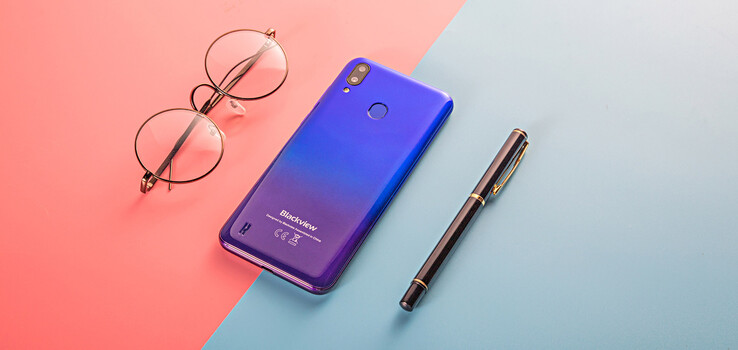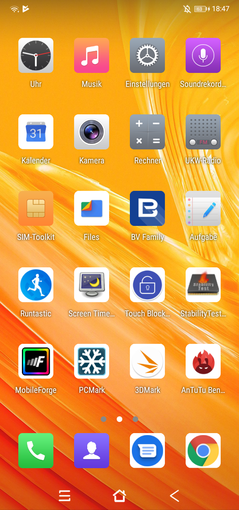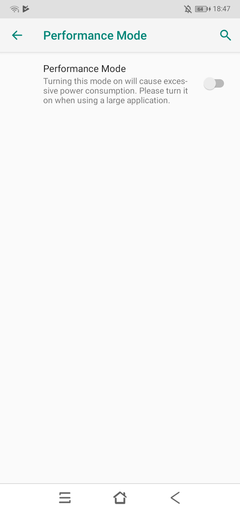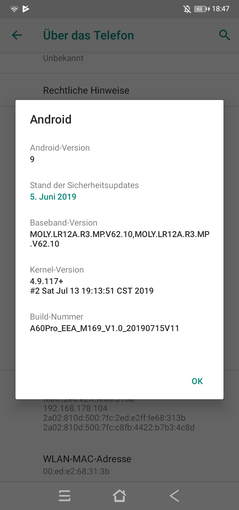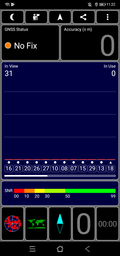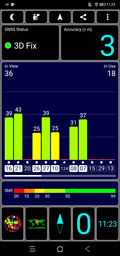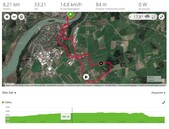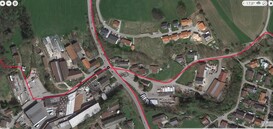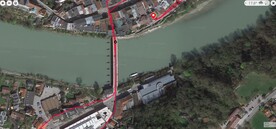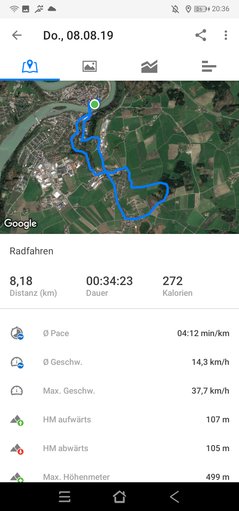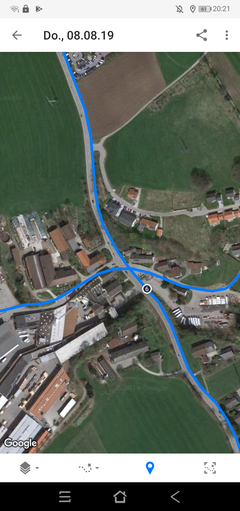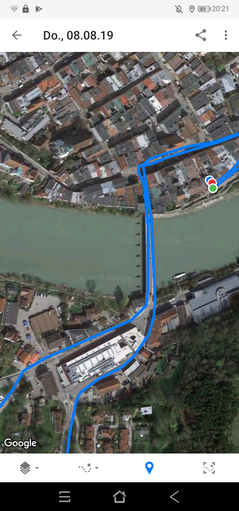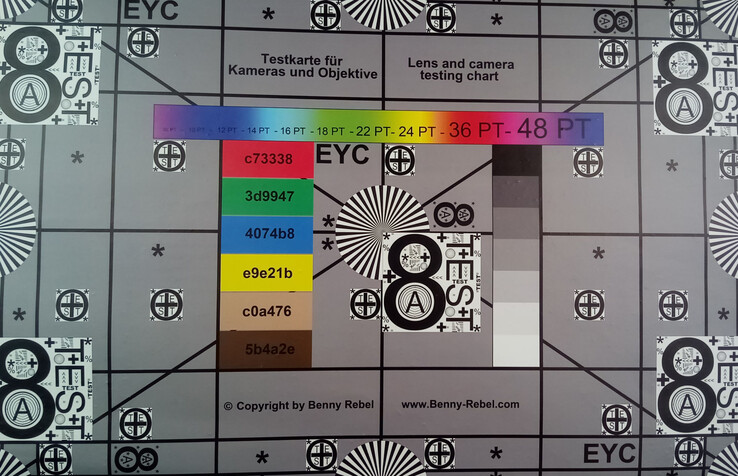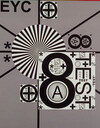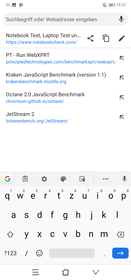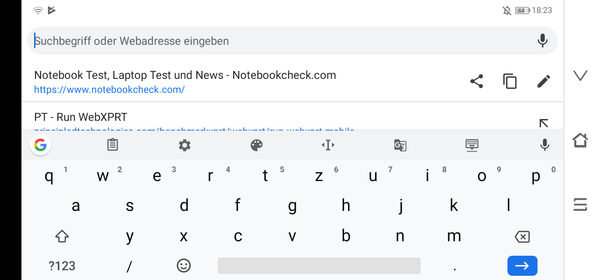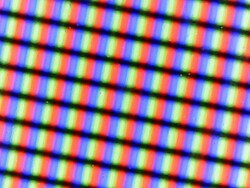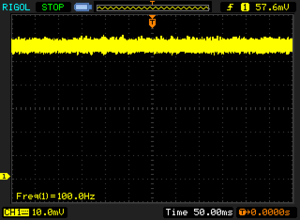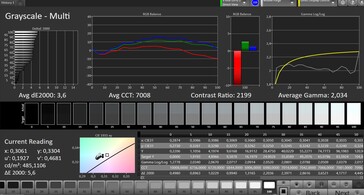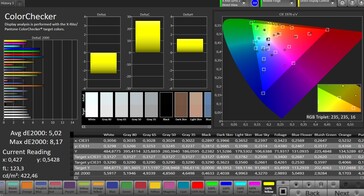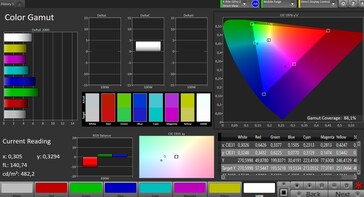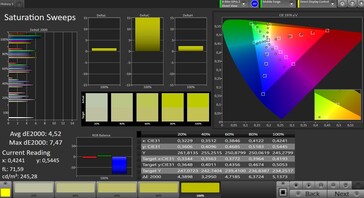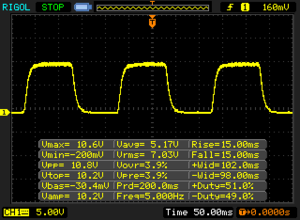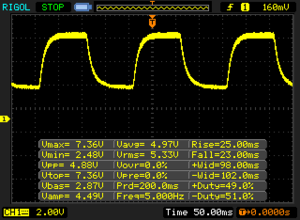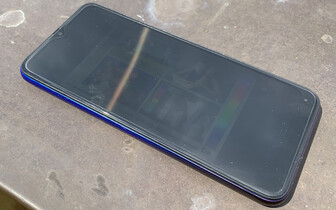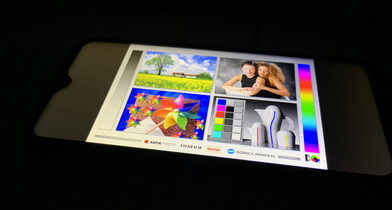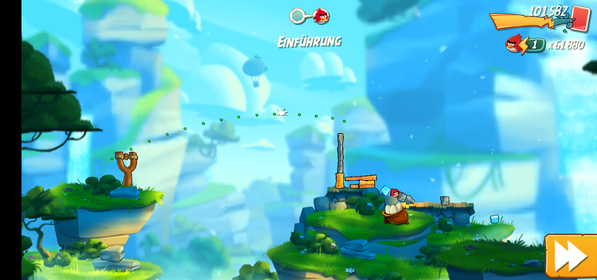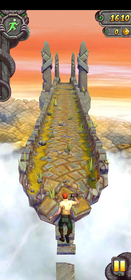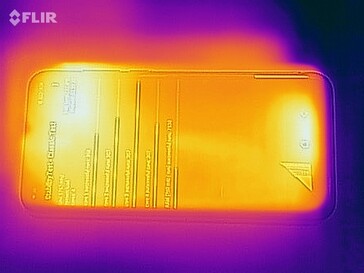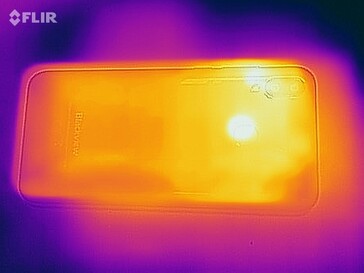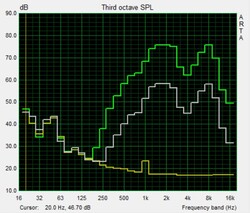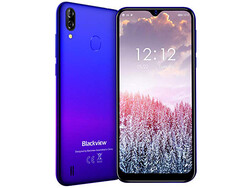Blackview A60 Pro Smartphone Review: A compelling offer?
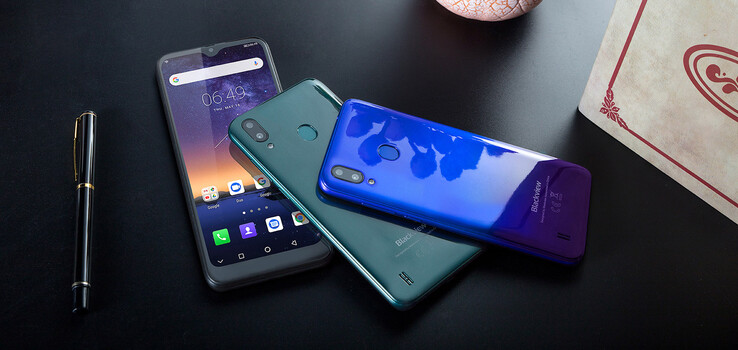
Until last year, we would have said that decent sub-100 Euro (~US$111) smartphones were scarce. The arrival of the Honor 7A and Xiaomi Redmi 7A changed that, with both being great value for money and having enough performance to power through basic tasks while looking the part too.
Now, Hong Kong-based manufacturer Blackview wants a piece of the action, with it launching the A60 Pro at just 90 Euros (~US$100) in direct competition with Honor and Xiaomi. The A60 Pro comes with a 6.1-inch IPS display, LTE and even a fingerprint scanner, the latter of which is often absent from budget smartphones. LTE support is not a given either.
The A60 Pro faces stiff competition from not only the Honor 7A and Redmi 7A, but also the Cubot J3 Pro and Wiko Jerry3. We shall compare the A60 Pro against all four devices to see if it can establish itself as the new go-to budget smartphone.
Case
The A60 Pro comes in three colours, Gradient Blue, Emerald Green and Interstellar Black. The latter has a striped pattern on its back cover, while the back of the blue version has a gradient finish to it. The back cover is not up to the standards of modern flagship devices, but it is comparable with other sub-100 Euro (~US$111) devices. Its waterdrop notch and narrow display bezels make the A60 Pro look comparatively modern though.
Blackview has included a removable back, but this only gives access to the card slots, with the battery in our review unit being firmly installed. The A60 Pro is also sturdy, with it resisting most of our attempts to twist it. We did succeed at temporarily causing the display to deform, but only by applying heavy pressure to its surface.
The A60 Pro is taller and thicker than most of our comparison devices, although its comparatively large display explains away the former. Our review unit also weighs more than all but the Cubot J3 Pro of our comparison devices, but this is also unsurprising too because of its additional height.
Connectivity
Blackview has equipped the A60 Pro with 3 GB of RAM and 16 GB of storage, which are plentiful for a budget handset. Only 11 GB of the latter is free though, with the remainder being used by the OS. Thankfully, Blackview has included a microSD card reader that officially accepts up to 256-GB cards. While it is unfortunate that microSD cards can only be formatted as external storage, we like that Blackview has equipped the A60 Pro with a dedicated microSD card reader, which is not always the case on modern smartphones. Some OEMs include a hybrid second SIM card slot instead, which forces people to choose between microSD card expansion and dual-SIM functionality. The A60 has two SIM card slots too, which is handy.
The device also has a fingerprint scanner, as we mentioned earlier along with a 3.5 mm jack, the inclusion of which we always welcome. You can connect external audio equipment via Bluetooth if you prefer too.
Software
The A60 Pro comes with Android 9.0 Pie, with Blackview having pushed the June 2019 set of security patches to our review unit at the time of testing. Both are surprisingly up-to-date for a budget handset, and it is pleasing to see Blackview include only a few in-house apps. The company has included a few additional settings like a Performance Mode, which is a nice touch, although Blackview seemingly forgot to translate the whole UI into other languages besides English. Performance Mode, for example, remains in English even with the System UI set to German, which could prove annoying for some people.
Communication & GPS
The A60 Pro supports all modern Wi-Fi standards up to IEEE 802.11n, which you may have seen referred to elsewhere as Wi-Fi 4. Our review unit averaged around 50 Mb/s in both iperf3 Client Wi-Fi tests that we conducted with our Linksys EA8500 reference router, putting it in the midfield of our comparison tables. The Cubot J3 Pro and Redmi 7A finish ahead of the A60 Pro in both tests, but only by a few Mb/s.
The A60 only supports essential LTE frequencies, meaning that you should have no issues with connecting to an LTE network in Central Europe. The A60 Pro is no intercontinental traveller, but it should generally find an LTE network abroad too. Its maximum LTE speed is decent for a budget handset, while our review unit maintained good network reception on the well-developed German D2 network during our tests, which we conducted indoors and outdoors.
| Networking | |
| iperf3 transmit AX12 | |
| Xiaomi Redmi 7A | |
| Cubot J3 Pro | |
| Blackview A60 Pro | |
| Honor 7A | |
| Wiko Jerry 3 | |
| iperf3 receive AX12 | |
| Cubot J3 Pro | |
| Xiaomi Redmi 7A | |
| Blackview A60 Pro | |
| Honor 7A | |
| Wiko Jerry 3 | |
Our review unit cannot locate us indoors, which is to be expected from a budget device. However, it achieved an impressive three metres accuracy outside, which is something akin to a flagship handset.
We also took the A60 Pro on a bike ride to compare its location data with a Garmin Edge 520, our reference bike computer. Our review unit performed well during this test, with it generally mapping our positioning accurately. Overall, while the A60 Pro is accurate enough for most navigation tasks, its lack of a compass means that we could not see the direction in which we were pointing our review unit.
Telephone Features & Call Quality
Blackview preinstalls the standard suite of Google telephony apps, which work just as well as they have on other devices that we have tested. Blackview claims that the A60 Pro supports voice over LTE (VoLTE), although your carrier must provision the device before VoLTE will work; it will not work on every network out of the box.
Call quality is a mixed bag. While the earpiece cleanly outputs audio, it does so comparatively quietly and with audible ambient noise. The microphone is passable too, although it has tended to distort our voice during our tests if we spoke loudly, causing us to speak more quietly than we normally would. The microphone can pick out our voice well when using handsfree, but our call partner’s voice sounds overly thin for our tastes.
Cameras
Blackview equips the A60 with an 8 MP main rear-facing camera, which it complements with a 0.3 MP depth of field sensor. We doubt that such a low-resolution sensor will have much of an effect in daily use though.
The main rear-facing sensor takes comparatively dark-looking pictures, while simultaneously overexposing light areas. Dynamic range leaves plenty to be desired too, with colours also looking distorted. Moreover, the sky in our test shots looks pixelated and overly dull. Low-light shots are also laughably bad, as demonstrated below by scene 3.
The main sensor can record videos in up to 1080p at 30 FPS, with our test videos suffering from the same image quality issues that our test photos did. The camera does not change exposure levels smoothly either, and textures often look pixelated. Corresponding audio recordings are overly quiet too.
Blackview also includes a 5 MP front-facing camera, but the less said about it, the better. In short, our test photos tend to look blurry, pixelated, underexposed and lacking in detail.
Overall, the A60 Pro has underwhelming cameras compared to those that Xiaomi uses in the Redmi 7A. However, they are still on par with other budget smartphones, which is not saying much.
We also subjected our review unit to further camera tests under controlled lighting conditions, giving it somewhat of a second chance. Unfortunately, the sensor only reproduces a few colours accurately, with there also being some strange aberrations as demonstrated by our ColorChecker Passport chart below. The A60 Pro does a better job at capturing our test chart, although contrast levels drop off excessively towards the top-left of the picture.
Accessories & Warranty
The A60 Pro comes with a silicone case, a charger and a USB cable. Blackview does not include a SIM tool as the card slots are accessible by removing the back cover.
Oddly, Blackview does not provide any warranty information, which is worrying. You should have no warranty-related problems if you buy the device from a reputable third-party retailer though, as it should provide additional coverage. Please see our Guarantees, Return Policies & Warranties FAQ for country-specific information.
Input Devices & Operation
Blackview preinstalls a screen protector that has a highly resistive finish. Worryingly, the touchscreen is not sensitive enough even with the protector removed, as our review unit frequently failed to reproduce our inputs onscreen.
By contrast, the fingerprint scanner worked reliably and unlocked the device quickly. Blackview includes a facial-unlocking system too, but this only uses the front-facing camera to authenticate your face, which is not as accurate or secure as something like Apple’s Face ID.
The A60 Pro has two hardware buttons, a power button and a volume rocker, which are both located on the right-hand side of the device. They both have good pressure points and worked well during our tests, so we have no complaints here.
Display
The A60 Pro has a 6.1-inch IPS panel, with Blackview opting for the rather unusual resolution of 1280x600. By contrast, the Redmi 7A and Honor 7A have a 720p display, which allows them to show content more sharply than the A60 Pro can. Images also look slightly blurred on closer inspection, but this is a flaw of many budget handsets.
Our review unit gets brighter than most of our comparison devices, although we recorded the Redmi 7A getting 9% brighter than the A60 Pro. The display is satisfactorily evenly lit too.
| |||||||||||||||||||||||||
Brightness Distribution: 89 %
Center on Battery: 472 cd/m²
Contrast: 2145:1 (Black: 0.22 cd/m²)
ΔE ColorChecker Calman: 5.02 | ∀{0.5-29.43 Ø4.78}
ΔE Greyscale Calman: 3.6 | ∀{0.09-98 Ø5}
88.1% sRGB (Calman 2D)
Gamma: 2.034
CCT: 7008 K
| Blackview A60 Pro IPS, 1280x600, 6.1" | Xiaomi Redmi 7A IPS, 1440x720, 5.5" | Honor 7A IPS, 1440x720, 5.7" | Cubot J3 Pro IPS, 960x480, 5.5" | Wiko Jerry 3 IPS, 960x480, 5.5" | |
|---|---|---|---|---|---|
| Screen | -46% | -15% | -90% | -64% | |
| Brightness middle (cd/m²) | 472 | 533 13% | 417 -12% | 476 1% | 370 -22% |
| Brightness (cd/m²) | 465 | 506 9% | 395 -15% | 459 -1% | 367 -21% |
| Brightness Distribution (%) | 89 | 88 -1% | 88 -1% | 88 -1% | 90 1% |
| Black Level * (cd/m²) | 0.22 | 0.6 -173% | 0.18 18% | 0.75 -241% | 0.4 -82% |
| Contrast (:1) | 2145 | 888 -59% | 2317 8% | 635 -70% | 925 -57% |
| Colorchecker dE 2000 * | 5.02 | 5.6 -12% | 6.46 -29% | 8.14 -62% | 8.58 -71% |
| Colorchecker dE 2000 max. * | 8.17 | 11.4 -40% | 10.72 -31% | 16.68 -104% | 16.5 -102% |
| Greyscale dE 2000 * | 3.6 | 7.4 -106% | 5.8 -61% | 12.2 -239% | 9.3 -158% |
| Gamma | 2.034 108% | 2.212 99% | 2.423 91% | 2.273 97% | 2.083 106% |
| CCT | 7008 93% | 7974 82% | 7839 83% | 7643 85% | 9315 70% |
* ... smaller is better
Screen Flickering / PWM (Pulse-Width Modulation)
| Screen flickering / PWM detected | 100 Hz | ≤ 10 % brightness setting | |
The display backlight flickers at 100 Hz (worst case, e.g., utilizing PWM) Flickering detected at a brightness setting of 10 % and below. There should be no flickering or PWM above this brightness setting. The frequency of 100 Hz is very low, so the flickering may cause eyestrain and headaches after extended use. In comparison: 53 % of all tested devices do not use PWM to dim the display. If PWM was detected, an average of 8101 (minimum: 5 - maximum: 343500) Hz was measured. | |||
The A60 Pro also has a comparatively low black value that we measure at 0.22 cd/m², which helps it achieve an exemplary 2,145:1 contrast ratio. However, the display suffers from a blue tint that makes colours look overly washed-out.
CalMAN and our photo spectrometer reinforce this and demonstrate that the A60 Pro has comparatively low DeltaE colour deviations for a budget smartphone. In short, the display in our review unit reproduces colours more naturally than our comparison devices do.
Disappointingly, the A60 Pro uses pulse-width modulation (PWM) to regulate display brightness at and below 10% brightness. This can cause health issues like headaches and eye strain for some people, with its 100 Hz PWM frequency being low enough to affect those who are PWM sensitive.
Display Response Times
| ↔ Response Time Black to White | ||
|---|---|---|
| 30 ms ... rise ↗ and fall ↘ combined | ↗ 15 ms rise | |
| ↘ 15 ms fall | ||
| The screen shows slow response rates in our tests and will be unsatisfactory for gamers. In comparison, all tested devices range from 0.1 (minimum) to 240 (maximum) ms. » 79 % of all devices are better. This means that the measured response time is worse than the average of all tested devices (20.2 ms). | ||
| ↔ Response Time 50% Grey to 80% Grey | ||
| 48 ms ... rise ↗ and fall ↘ combined | ↗ 25 ms rise | |
| ↘ 23 ms fall | ||
| The screen shows slow response rates in our tests and will be unsatisfactory for gamers. In comparison, all tested devices range from 0.165 (minimum) to 636 (maximum) ms. » 82 % of all devices are better. This means that the measured response time is worse than the average of all tested devices (31.6 ms). | ||
The A60 Pro gets bright enough to use outdoors. However, we would recommend finding a shady spot where possible as bright sunlight overpowers the screen and makes it difficult to read. The preinstalled screen protector catches the light and is highly reflective too.
Our review unit has stable viewing angles as well, but it does suffer from visible colour shifts at acute angles as the photo below demonstrates.
Performance
Blackview equips the A60 Pro with a MediaTek Helio A22 MT6761, a midrange SoC that we did not expect to see in a sub-100 Euro (~US$111) device. Our review unit performed well in synthetic benchmarks, with it consistently finishing second to the Redmi 7A. System performance is usually smooth, with apps and the OS loading quickly. The system keeps several background apps open simultaneously too, which is not always the case with budget handsets.
The Helio A22 MT6761 also integrates a PowerVR GE8300 GPU, which performed well in synthetic benchmarks too. However, it slips behind the Adreno 505 in our comparison table, putting the A60 Pro below the Honor 7A and Redmi 7A.
| PCMark for Android | |
| Work performance score (sort by value) | |
| Blackview A60 Pro | |
| Xiaomi Redmi 7A | |
| Honor 7A | |
| Cubot J3 Pro | |
| Wiko Jerry 3 | |
| Average Mediatek Helio A22 MT6761 (4229 - 7216, n=9) | |
| Work 2.0 performance score (sort by value) | |
| Blackview A60 Pro | |
| Xiaomi Redmi 7A | |
| Honor 7A | |
| Cubot J3 Pro | |
| Wiko Jerry 3 | |
| Average Mediatek Helio A22 MT6761 (4195 - 5511, n=11) | |
| GFXBench 3.0 | |
| on screen Manhattan Onscreen OGL (sort by value) | |
| Blackview A60 Pro | |
| Xiaomi Redmi 7A | |
| Honor 7A | |
| Cubot J3 Pro | |
| Wiko Jerry 3 | |
| Average Mediatek Helio A22 MT6761 (11 - 15, n=7) | |
| Average of class Smartphone (18 - 166, n=157, last 2 years) | |
| 1920x1080 1080p Manhattan Offscreen (sort by value) | |
| Blackview A60 Pro | |
| Xiaomi Redmi 7A | |
| Honor 7A | |
| Wiko Jerry 3 | |
| Average Mediatek Helio A22 MT6761 (6.5 - 7.3, n=7) | |
| Average of class Smartphone (12 - 606, n=156, last 2 years) | |
| GFXBench 3.1 | |
| on screen Manhattan ES 3.1 Onscreen (sort by value) | |
| Blackview A60 Pro | |
| Xiaomi Redmi 7A | |
| Honor 7A | |
| Cubot J3 Pro | |
| Wiko Jerry 3 | |
| Average Mediatek Helio A22 MT6761 (7.6 - 11, n=7) | |
| Average of class Smartphone (11 - 166, n=157, last 2 years) | |
| 1920x1080 Manhattan ES 3.1 Offscreen (sort by value) | |
| Blackview A60 Pro | |
| Xiaomi Redmi 7A | |
| Honor 7A | |
| Cubot J3 Pro | |
| Wiko Jerry 3 | |
| Average Mediatek Helio A22 MT6761 (2.5 - 5, n=7) | |
| Average of class Smartphone (8.4 - 413, n=156, last 2 years) | |
| AnTuTu v7 - Total Score (sort by value) | |
| Blackview A60 Pro | |
| Xiaomi Redmi 7A | |
| Honor 7A | |
| Wiko Jerry 3 | |
| Average Mediatek Helio A22 MT6761 (63421 - 65996, n=5) | |
The same is the case with browser benchmarks, although the A60 Pro occasionally has the edge over the Redmi 7A. We found that media content took a while to load during our tests, but few smartphones offer as smooth of an internet-browsing experience as the A60 Pro does.
| Jetstream 2 - 2.0 Total Score | |
| Average of class Smartphone (23.8 - 387, n=149, last 2 years) | |
| Xiaomi Redmi 7A (Chrome 76) | |
| Average Mediatek Helio A22 MT6761 (13.4 - 20.3, n=6) | |
| Blackview A60 Pro (Chrome 76) | |
| WebXPRT 3 - Overall | |
| Average of class Smartphone (38 - 380, n=31, last 2 years) | |
| Xiaomi Redmi 7A (Chrome 76) | |
| Average Mediatek Helio A22 MT6761 (30 - 39, n=6) | |
| Blackview A60 Pro (Chrome 76) | |
| Octane V2 - Total Score | |
| Average of class Smartphone (2228 - 121337, n=197, last 2 years) | |
| Xiaomi Redmi 7A (Chrome 76) | |
| Average Mediatek Helio A22 MT6761 (3920 - 5041, n=8) | |
| Blackview A60 Pro (Chrome 76) | |
| Honor 7A (Chrome 67) | |
| Wiko Jerry 3 (Chrome 67) | |
| Mozilla Kraken 1.1 - Total | |
| Wiko Jerry 3 (Chrome 67) | |
| Cubot J3 Pro (Chrome 73) | |
| Honor 7A (Chrome 67) | |
| Blackview A60 Pro (Chrome 76) | |
| Average Mediatek Helio A22 MT6761 (9310 - 12215, n=6) | |
| Xiaomi Redmi 7A (Chrome 76) | |
| Average of class Smartphone (257 - 28190, n=154, last 2 years) | |
* ... smaller is better
Sadly, Blackview has equipped the A60 Pro with comparatively slow storage. Our review unit falls well short in AndroBench of what we have come to expect from devices with 16 GB of eMMC flash storage. All our comparison devices have faster storage too.
Likewise, the A60 Pro has a slow microSD card reader, which disappointed during our tests. The reader achieved almost 5x slower write speeds and 2x read speeds with our Toshiba Exceria Pro M501 reference card than our comparison devices, something we did not expect.
| Blackview A60 Pro | Xiaomi Redmi 7A | Honor 7A | Cubot J3 Pro | Wiko Jerry 3 | Average 16 GB eMMC Flash | Average of class Smartphone | |
|---|---|---|---|---|---|---|---|
| AndroBench 3-5 | 106% | 98% | 71% | -24% | 27% | 2365% | |
| Sequential Read 256KB (MB/s) | 286.4 | 258 -10% | 254.8 -11% | 235.6 -18% | 117.1 -59% | 164.5 ? -43% | 2228 ? 678% |
| Sequential Write 256KB (MB/s) | 41.2 | 68.7 67% | 72.5 76% | 47.5 15% | 50.8 23% | 43 ? 4% | 1852 ? 4395% |
| Random Read 4KB (MB/s) | 31.5 | 57.8 83% | 39.2 24% | 27.2 -14% | 24.18 -23% | 21.7 ? -31% | 296 ? 840% |
| Random Write 4KB (MB/s) | 9.3 | 9.6 3% | 9.4 1% | 10.1 9% | 11.23 21% | 8.08 ? -13% | 339 ? 3545% |
| Sequential Read 256KB SDCard (MB/s) | 41.95 ? | 85.2 ? 103% | 84.9 ? 102% | 74.8 ? 78% | 16 ? -62% | 59.1 ? 41% | |
| Sequential Write 256KB SDCard (MB/s) | 13.12 ? | 64.6 ? 392% | 65.4 ? 398% | 60.1 ? 358% | 7.4 ? -44% | 39.8 ? 203% |
Games
The PowerVR GE8300 is powerful enough to play older titles like Angry Birds 2 smoothly most of the time, although we noticed some occasional frame rate stutters.
However, the touchscreen proved tricky to activate when playing fast-paced games like Temple Run 2. In short, the touchscreen is simply too insensitive for our liking, and much more so than those in our comparison devices at any rate.
Emissions
Temperature
The A60 Pro always runs hot, with surface temperatures never dropping below 30 °C. It is pleasing to see temperatures remain below 39 °C even under load though, which we did not expect considering its idle temperatures. Overall, the A60 Pro will never feel cool to the touch, but it should never feel uncomfortably hot either.
(+) The maximum temperature on the upper side is 39 °C / 102 F, compared to the average of 35.2 °C / 95 F, ranging from 21.9 to 247 °C for the class Smartphone.
(+) The bottom heats up to a maximum of 37.7 °C / 100 F, compared to the average of 34 °C / 93 F
(±) In idle usage, the average temperature for the upper side is 32.9 °C / 91 F, compared to the device average of 32.9 °C / 91 F.
Speakers
The A60 Pro has a mono speaker that disappointed even by budget smartphone standards. The speaker in our review unit reached a maximum of 82 dB(A) during our tests, but it under-represents mid-high frequencies while over-representing ultra-high ones, which makes music sound tinny and shrill.
Hence, we would recommend using headphones or speakers where possible, which you can connect via the 3.5 mm jack or Bluetooth. Both methods output audio cleanly, with the former also gripping jacks tightly.
Blackview A60 Pro audio analysis
(+) | speakers can play relatively loud (83.9 dB)
Bass 100 - 315 Hz
(-) | nearly no bass - on average 68.5% lower than median
(+) | bass is linear (0% delta to prev. frequency)
Mids 400 - 2000 Hz
(-) | nearly no mids - on average 68.5% lower than median
(+) | mids are linear (0% delta to prev. frequency)
Highs 2 - 16 kHz
(-) | nearly no highs - on average 68.5% lower than median
(+) | highs are linear (0% delta to prev. frequency)
Overall 100 - 16.000 Hz
(-) | overall sound is not linear (122.5% difference to median)
Compared to same class
» 91% of all tested devices in this class were better, 7% similar, 2% worse
» The best had a delta of 11%, average was 35%, worst was 134%
Compared to all devices tested
» 97% of all tested devices were better, 2% similar, 1% worse
» The best had a delta of 4%, average was 24%, worst was 134%
Xiaomi Redmi 7A audio analysis
(+) | speakers can play relatively loud (82 dB)
Bass 100 - 315 Hz
(-) | nearly no bass - on average 67.5% lower than median
(+) | bass is linear (0% delta to prev. frequency)
Mids 400 - 2000 Hz
(-) | nearly no mids - on average 67.5% lower than median
(+) | mids are linear (0% delta to prev. frequency)
Highs 2 - 16 kHz
(-) | nearly no highs - on average 67.5% lower than median
(+) | highs are linear (0% delta to prev. frequency)
Overall 100 - 16.000 Hz
(-) | overall sound is not linear (126.1% difference to median)
Compared to same class
» 96% of all tested devices in this class were better, 3% similar, 1% worse
» The best had a delta of 11%, average was 35%, worst was 134%
Compared to all devices tested
» 99% of all tested devices were better, 1% similar, 0% worse
» The best had a delta of 4%, average was 24%, worst was 134%
Power Management
Power Consumption
The A60 Pro is comparatively economic when it comes to power consumption, especially under load. Our review unit finishes someway clear of all the devices in our comparison table, despite averaging more than most when idling.
| Off / Standby | |
| Idle | |
| Load |
|
Key:
min: | |
| Blackview A60 Pro 4080 mAh | Xiaomi Redmi 7A 4000 mAh | Honor 7A 3000 mAh | Cubot J3 Pro 2800 mAh | Wiko Jerry 3 2500 mAh | Average Mediatek Helio A22 MT6761 | Average of class Smartphone | |
|---|---|---|---|---|---|---|---|
| Power Consumption | -5% | -28% | -42% | -21% | 1% | -45% | |
| Idle Minimum * (Watt) | 0.8 | 0.8 -0% | 1.3 -63% | 1.4 -75% | 1 -25% | 0.881 ? -10% | 0.842 ? -5% |
| Idle Average * (Watt) | 1.8 | 1.6 11% | 1.6 11% | 1.8 -0% | 1.5 17% | 1.864 ? -4% | 1.439 ? 20% |
| Idle Maximum * (Watt) | 2.2 | 2.2 -0% | 2.9 -32% | 2.4 -9% | 2.3 -5% | 2.13 ? 3% | 1.624 ? 26% |
| Load Average * (Watt) | 3.3 | 3.9 -18% | 3.7 -12% | 5.5 -67% | 5 -52% | 3.1 ? 6% | 7.03 ? -113% |
| Load Maximum * (Watt) | 4.5 | 5.4 -20% | 6.4 -42% | 7.2 -60% | 6.3 -40% | 4.12 ? 8% | 11.3 ? -151% |
* ... smaller is better
Battery Life
Blackview has equipped the A60 Pro with a 4,080 mAh battery, putting it on par with the capacity of the Redmi 7A. Our review unit has excellent battery life, particularly with its 12:18 hours of runtime in our Wi-Fi test, but it cannot match the Redmi 7A. The latter lasted almost two hours longer than the former, although the Redmi 7A proved an outlier as the A60 Pro outclassed our other comparison devices. In short, most people should get around two days of use between charges with the A60 Pro.
The A60 Pro takes a disappointingly long time to fully recharge with the default charger. Our review unit took just under three hours to reach 100% charge again, so we would recommend charging it overnight or during a period when you know that you will not need your phone. Otherwise, you will spend a long time tethered to the mains.
| Blackview A60 Pro 4080 mAh | Xiaomi Redmi 7A 4000 mAh | Honor 7A 3000 mAh | Cubot J3 Pro 2800 mAh | Wiko Jerry 3 2500 mAh | |
|---|---|---|---|---|---|
| Battery runtime | 15% | -11% | -28% | -46% | |
| WiFi v1.3 (h) | 12.3 | 14.2 15% | 11 -11% | 8.9 -28% | 6.6 -46% |
| Reader / Idle (h) | 25.7 | ||||
| H.264 (h) | 15 | ||||
| Load (h) | 4.8 |
Pros
Cons
Verdict
The Blackview A60 Pro is an honourable attempt to outdo the Xiaomi Redmi 7A, with the former able to compete well with the latter in some areas. The A60 Pro has comparably good battery life and performance along with a bright and contrast-rich display. The device has decent connectivity for a sub-100 Euro (~US$111) smartphone too, while we were also pleasantly surprised to see Blackview include a fingerprint scanner and an accurate GPS module. The waterdrop notch gives the A60 Pro a modern, albeit divisive, look too.
Nevertheless, the A60 Pro falls short of the Redmi 7A overall, with the latter having a much better camera, faster storage, fast charging support and a better speaker than the former. The A60 Pro also has questionable warranty coverage and an inaccurate touchscreen, neither of which are issues for the Redmi 7A.
The Blackview A60 Pro has many positives and is good value for money. However, there are even better deals that eclipse what the A60 Pro can offer, which is its downfall.
Overall, the Blackview A60 would be best suited for someone who is after a modern-looking smartphone and can overlook its frustrating shortcomings. If you are not one of those people and are in the market for a sub-100 Euro (~US$111) handset, then we would recommend checking out the Xiaomi Redmi 7A or Honor 7A instead.
Blackview A60 Pro
- 08/18/2019 v6 (old)
Florian Schmitt




